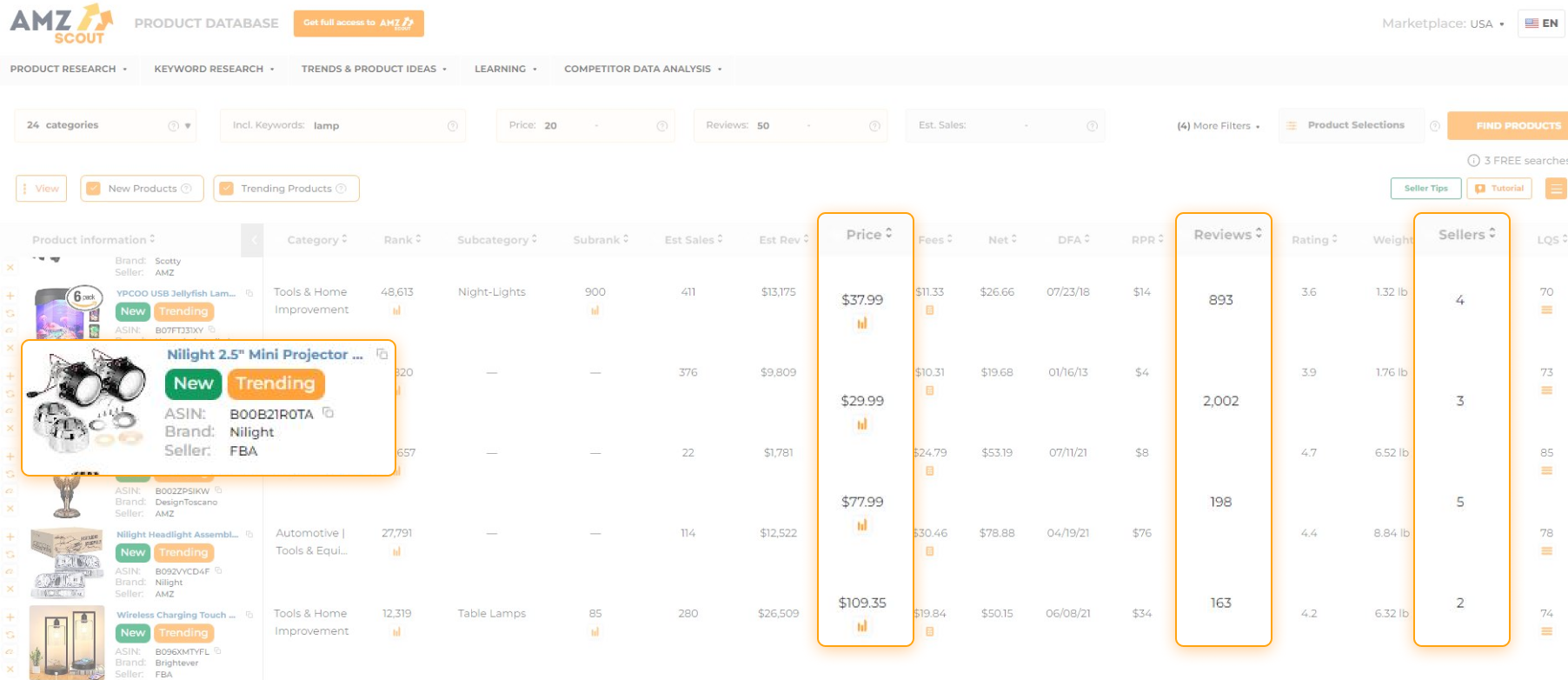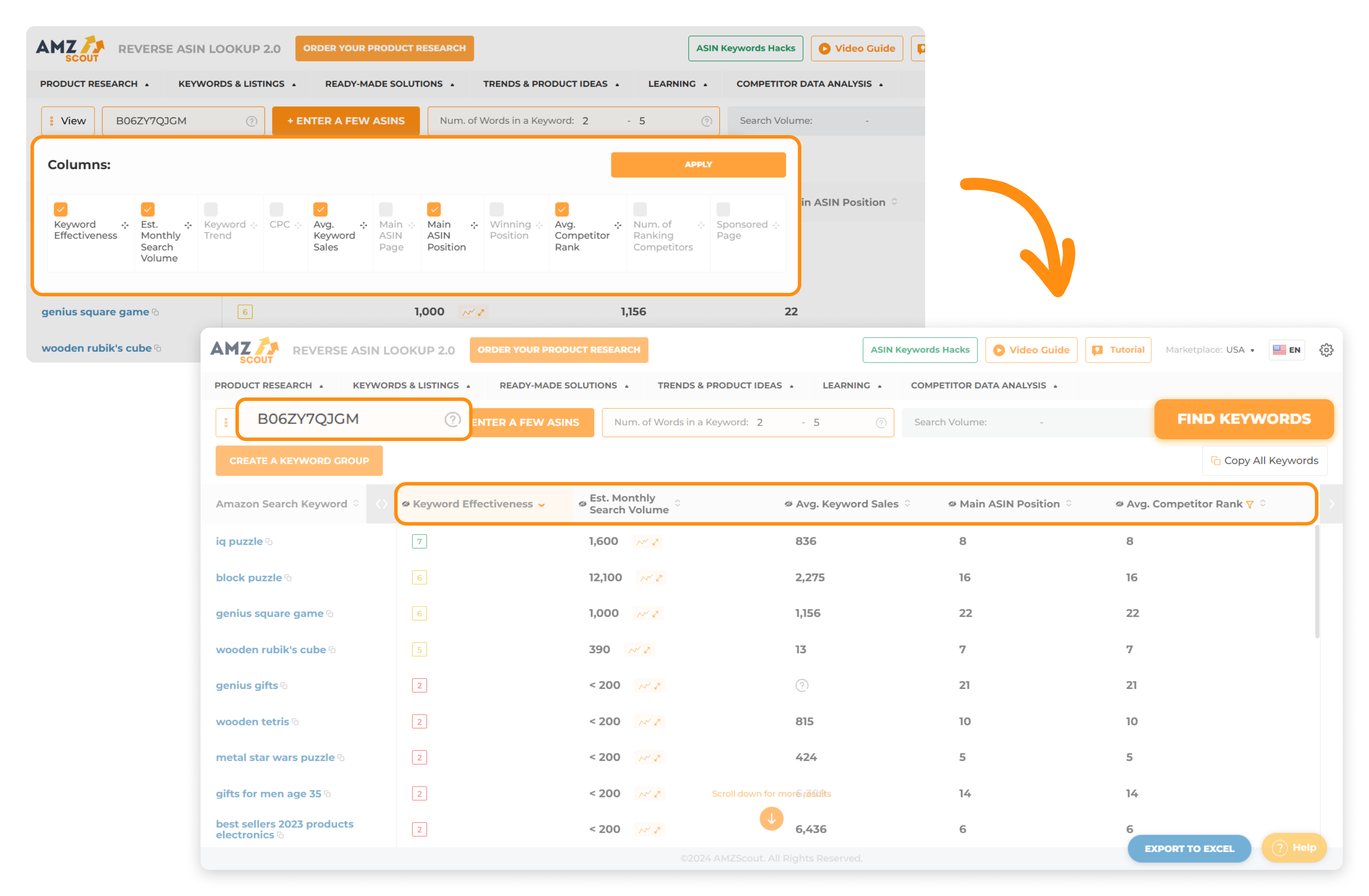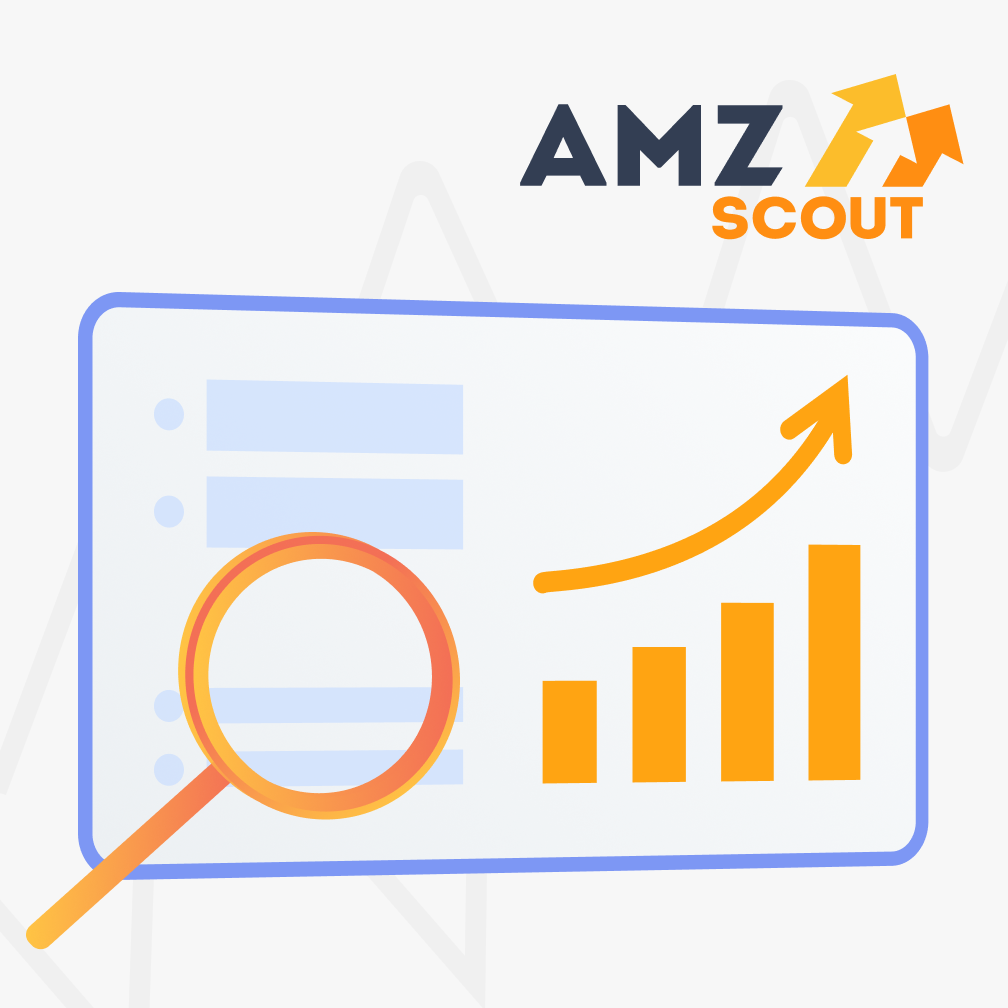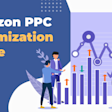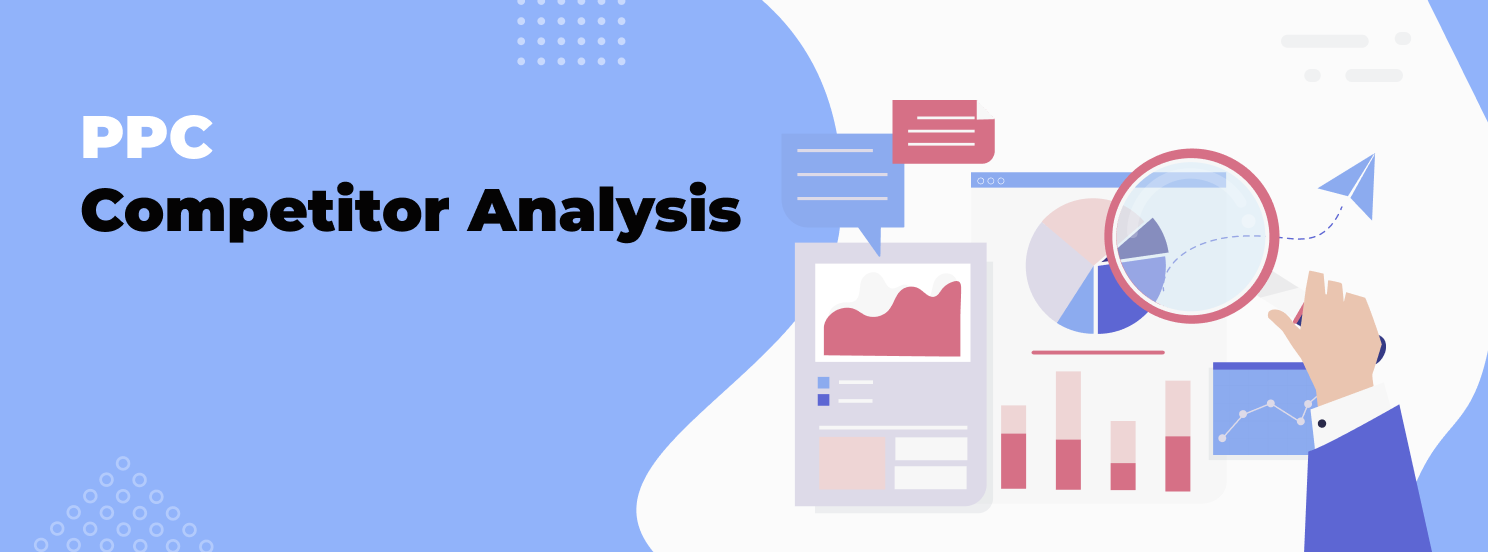
Competitor PPC Analysis: How to Unlock Insights and Boost Your Ads
Sellers know that advertising is one of the quickest ways to boost visibility and drive traffic. But creating effective ads isn’t always easy. Are you unsure where to start, or do you feel like you’ve tried everything? The key to success could be hidden in your competitors' strategies.
In this article, we’ll guide you through the steps of PPC competitor analysis to help you get ahead.
Table of contents
What Is Competitor PPC Analysis and Why It Matters in 2025
Competitive PPC analysis involves examining what your competitors are doing with their ads—what keywords they use, what images they feature, where and when they place their ads. While tactics may vary across platforms like Google or Facebook, the core principle remains the same: identify what works for others and apply those insights to your own campaigns.
In 2025, competitor PPC analysis is more critical than ever. As ecommerce continues to grow and evolve, several factors make it even more important:
Ad costs: With more demand for ad space, prices continue to rise, requiring smarter investments that pay off.
Bidding algorithms: These have become more sophisticated, making it crucial to stay on top of what your competitors are doing to bid effectively.
Search behavior changes: With the rise of voice search and digital assistants like Alexa, content must now be optimized to be agent-friendly, adding a layer of complexity to PPC strategies.
By analyzing your competitors’ PPC efforts, you can unlock key advantages, leading to better results in terms of campaign performance.
What You Need Before You Start
Before diving into the research of competitive PPC, there are a few things to think about:
Define your goals and KPIs: Are your competitors focusing on brand awareness or driving product sales? Once you’ve identified their goals, focus on key metrics they’re likely using, like conversion rates or ROI, to gauge the effectiveness of your own campaigns.
Study your audience and buyer intent: Consider the audience—are your competitors targeting local customers or expanding to other countries? It’s also important to identify which products they’re targeting, as this reveals the customer needs they’re addressing and helps refine your strategy.
Tip: Amazon sellers can use AMZScout’s Product Database to discover the products shoppers are most frequently searching for, helping you spot trends and stay ahead of the competition.
Study the platform: Each platform offers different formats for PPC—whether it’s ads, backlinks, affiliate or email marketing. Understanding how competitors use these formats on each platform will help you tailor your approach and stay competitive.
With a solid plan in place, you’re ready to begin your competitor benchmarking. In the next section, we’ll show you how to analyze what competitors are doing.
Step-by-Step: How to Perform a Competitor PPC Analysis in 2025
A PPC competitor analysis can vary depending on whether you're monitoring landing pages, marketplace PPC ads (like on Amazon or eBay), or websites, as well as your business model. Here’s a step-by-step guide on how to check your competitors' paid ads:
Step 1: Gather Your Competitor List
The first step is to identify which competitors you'll be analyzing. Start by looking for top sellers in your niche. For example, if you're selling on a marketplace like Amazon, search for your product and filter by "Best Sellers" to find top performers.
Alternatively, you can search for your product on Google and check PPC pages for relevant competitors. Limit your list to 3-5 companies that consistently show up across different sources, as this will give you a manageable set of competitors to focus on.
Step 2: Extract Competitors' Keywords
Since most PPC campaigns rely heavily on keywords, it's crucial to identify the most effective ones to target and avoid ineffective ones. While you can do this manually, using keyword research tools will provide detailed statistics on performance. For a broader analysis, keyword checkers like Ahrefs or SpyFu can give you a paid search audit (with some free features available). However, using platform-specific tools is often more efficient.
For example, to analyze competitor activity on Google Ads (formerly Google AdWords), use the Auction Insights report or the Google Ads Transparency Center for deeper insights.
We’ll answer the question, "How do you do keyword research?" using Amazon as an example, since it’s a leading ecommerce platform with a vast number of sellers and products.
Find the Keywords Your Competitors Are Using
To get the most accurate data on the keywords your competitors might be using on Amazon, we’ll use the keyword analyzer by AMZScout.
Here's how to use it:
1. Go to the Reverse ASIN Lookup.
2. Search for keywords. Enter competitors' ASINs that you can find in the "Product details" section of the Amazon page.
3. Receive keywords and statistics. Click "Find Keywords" and review data filtered by 10 parameters such as search volume and average monthly sales.
Once you have the data, review the relevant keywords (focus on those with a stable or positive search trend) to incorporate into your ads. Irrelevant keywords or those with a negative trend should be added to your blacklist to avoid wasting your budget.
Keep in mind, Amazon-specific trends often align with trends across other platforms. This data will help you refine your own PPC strategy, target the most relevant and high-performing keywords
Step 3: Analyze Their Ads and Offers
To gain a deeper understanding of your competitors' PPC strategies, it’s essential to analyze their ads and offers in detail. Focus on the following:
— How do they craft their headlines to grab attention? — What are they emphasizing—benefits, urgency, or exclusivity? — What emotions are they appealing to (fear, excitement, curiosity)? — Are they using social proof or testimonials to build trust? — Are they offering discounts or using psychological pricing techniques, such as “$9.99” instead of “$10”? — And more.
Tip: Consider using platform-specific tools to dig deeper. For instance, the Meta Ad Library for Facebook ads lets you explore your competitors' ad creatives, messaging, and offer structures. The artificial intelligence-powered tool can filter ads by keyword, location, or ad theme, allowing you to assess visual trends and CTA (Call-to-Action) patterns like "Shop Now."
By identifying these trends, you can gain new insights and ideas.
Step 4: Map Out Your Competitors Funnels
To gain insight into how your competitors turn leads into customers, it’s important to map out their entire sales funnel. Use a SimilarWeb plugin or BuiltWith to analyze their tactics. Here’s what to look for:
Encouraging sign-ups: Are they using popups or exit-intent offers to capture email addresses? This can help you understand their lead-generation tactics.
Retargeting: Identify whether they are using retargeting ads to bring visitors back to their site after they’ve left—whether it’s through product reminders, limited-time offers, or personalized recommendations.
Tracking user behaviour: Use tools like Facebook Pixel Helper or Tag Assistant (by Google) to check if your competitors track user behavior and segment audiences.
Landing pages: Map out the landing pages they use in their funnels. Are they driving traffic to specific offers or product pages? How do these pages align with their ads and email campaigns?
By analyzing these elements, you can understand where you can improve your own approach and how to enhance your offers.
Step 5: Identify Gaps & Opportunities
After reviewing your competitors’ strategies, focus on areas where they may be missing opportunities, such as overlooked keywords, areas for improvement in their messaging, or audience segments they’re not targeting. It’s essential to consistently track how PPC evolves and how your competitors adapt—or fail to do so. By identifying gaps and opportunities in their strategies, you can stay ahead of the curve.
FAQs
What is PPC competitor analysis?
PPC competitor analysis is the process of studying your competitors’ advertising campaigns to understand their tactics. This includes examining their keyword choices, ad copy, bidding strategies, and more. By analyzing this data, you can uncover what’s working for them and refine your own advertising approach.
Does Amazon use PPC?
Yes, Amazon uses PPC to run ads across its platform. Sellers can leverage this to promote their products, increase visibility in search results, and capture customer attention in various spots throughout the site. To achieve the best results, it's essential to optimize your Amazon ads effectively.
What is KPI in Amazon PPC?
KPI in Amazon PPC refers to the metrics used to assess the effectiveness of your ad campaigns. The specific KPIs you focus on depend on your goals—whether it’s driving brand awareness, boosting product sales, or something else. Common KPIs include CTR, CR, ACoS, ROAS, and CPC. By monitoring these metrics, you can adjust your campaigns for better performance.
What is the best Amazon competitor analysis tool?
The best Amazon competitor analysis tool depends on your goals, budget, and preferences. Many top sellers choose AMZScout for its functionality-to-price ratio. With features like keyword research, product research and more, it’s a top choice for optimizing selling and marketing strategies.
Conclusion
Spying on your competitors’ strategies involves several key steps. To simplify the process, consider using the right tools, like AMZScout, to analyze your competitors' keywords and gain actionable insights. This way, you can streamline your PPC analysis and fine-tune your own advertising strategy for improved performance.

